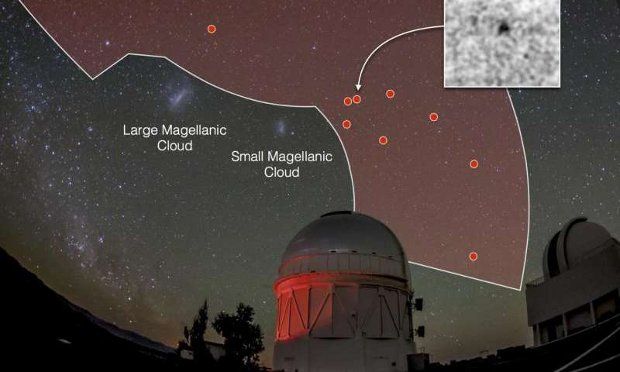In a report published this Monday, August 17, researchers at the Fermi National Accelerator Laboratory in the US announce the discovery of as many as 8 previously undocumented dwarf galaxies orbiting our Milky Way.
These previously unknown satellite galaxies, appearing as faint celestial objects in the deep cosmos, were discovered as part of the Dark Energy Survey.
This project has been ongoing since August of 2013 and that comes down to using the Dark Energy Camera, one of the most powerful digital cameras in the world, to map the sky in search of clues about dark energy.
The newly identified galaxies are quite small
Although they have yet to confirm this beyond a shadow of a doubt, researchers are quite sure that the faint celestial objects they identified in the sky with the help of the Dark Energy Camera are miniature galaxies that are satellites to our Milky Way.
“Scientists on the Dark Energy Suvey, using one of the world’s most powerful digital cameras, have discovered eight more faint celestial objects hovering near our Milky Way galaxy."
“Signs indicate that they, like the objects found by the same team earlier this year, are likely dwarf satellite galaxies, the smallest and closest known form of galaxies,” the astronomers behind this study write in the report detailing their work.
While the Milky Way and other galaxies comparable in size pack billions of stars, dwarfs like the ones recently identified using the Dark Energy Camera usually comprise merely 1,000 or so stars.
Astronomers have reasons to believe that, although they contain very few stars, dwarf galaxies are especially rich in dark matter. This means they might hold the key to better understanding this material that permeates the entire cosmos.
Of the newly discovered satellites of the Milky Way believed to be dwarf galaxies, the closest sits about 80,000 light-years away. The farthest, on the other hand, is about 700,000 light-years away.
What with their having a star population of about 500 to 1,000, they appear about 1 billion times dimmer and 1 million times less massive than the Milky Way, astronomers say.
Other dwarf galaxies are probably lurking nearby
Since August 2013 until now, the Dark Energy Survey has helped identify a total of 17 mysterious objects in the proximity of the Milky Way that could very well be teeny tiny satellite galaxies.
The investigation is still ongoing and so astronomers expect that other such previously undocumented neighbors of our home galaxy will be discovered in the years to come. More so since the Dark Energy Camera has so far only mapped merely a portion of the sky.
“The discovery of so many new galaxy candidates in one-eighth of the sky could mean there are more to find around the Milky Way,” says researcher Keith Bechtol of the University of Wisconsin-Madison.

 14 DAY TRIAL //
14 DAY TRIAL // 

